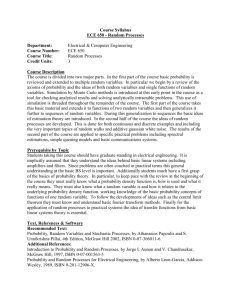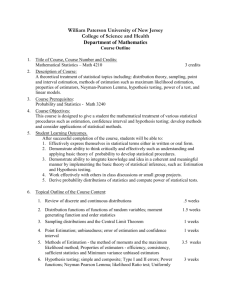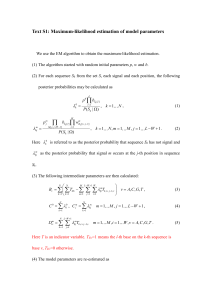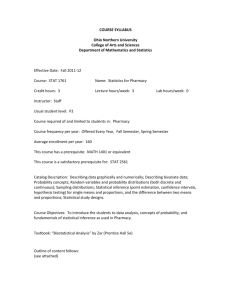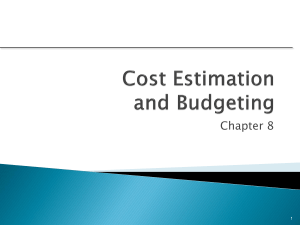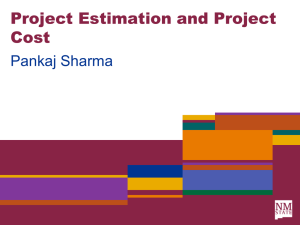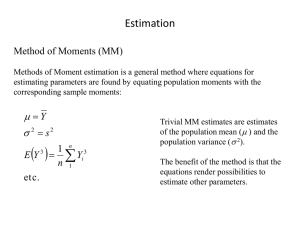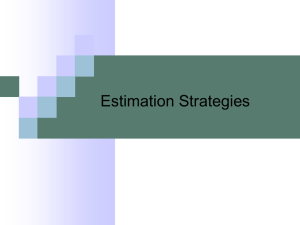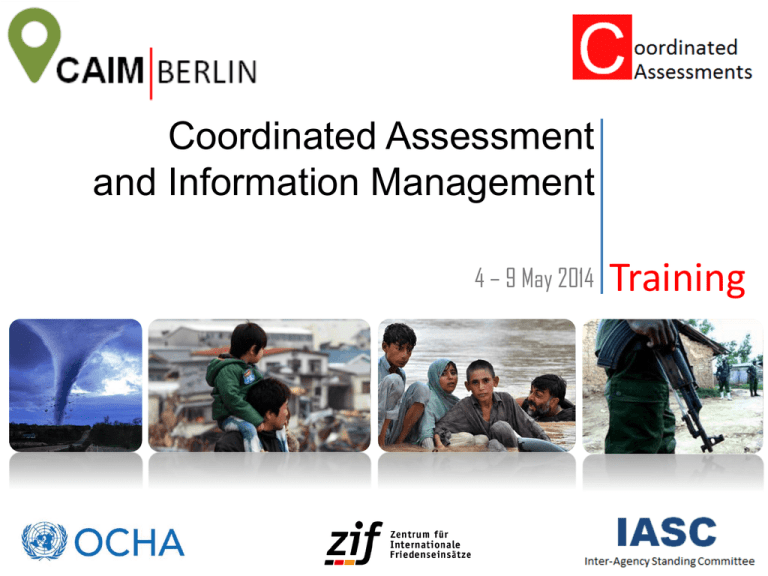
Coordinated Assessment
and Information Management
4 – 9 May 2014
Training
HUMANITARIAN PROFILE
METHODS OF ESTIMATING AFFCTED
POPULATION
Methods
• A total of five broad categories of population
estimation methods have been identified.
• Every method has been organized in one of
these categories:
– Sampling methods
– Site estimation methods
– Counting methods
– Remote estimation methods
– Estimations using population data sets
Site estimation methods
• ’Guesstimates’ and community estimates
• Many organisations make very rough
estimates (‘guesstimates’) based on visual
assessments. This educated guess can only be
done with some kind of visual picture of what,
for example, 1,000 people looks like (UNICEF
2010).
Site estimation methods
• Key informants’ estimates (people and
community leaders from the area, village
elders, service providers, local authorities) can
be important sources of information on
population figures, family composition,
household size, settlement patterns, and
arrival and departure rates (CIEDRS 2003,
UNICEF 2010).
Sampling methods
• Pre-crisis population size and location
provides guidance on the areas to sample and
• the relative population sizes among villages
(WFP 2007).
• If no detailed local maps are available it may
be necessary to create them (e.g.
displacement situations where refugee/IDP
settlements are evolving) (CIEDRS 2003).
Sampling Method
Quadrat method
• Obtain an aerial view or draw a map of the
area of interest
• Measure the perimeter of the area.
• Create a scale outline of the area
Sampling Method
Quadrat method
• Measure the total area by counting the number of full
and partial quadrats.
• Select a random sample of quadrats. (Head count)
• Extrapolation: The average population density
measured in the sample quadrats can be extrapolated
directly to the entire area for an estimate of total
population size
• Alternative: A population is never regularly distributed
equally among a camp. Population density is higher in
the middle of the camp where most facilities are
initially located, while it is dispersed at the periphery
Sampling: T-square method
• . Select a random point (WFP 2009). A number
of points (P), typically 60, are distributed
across the area using computer software
(either randomly or systematically)
• Measure the distance from this point to the
nearest occupied house (WFP 2009): from
each point (P) the distance (d1) to the nearest
house is measured
Sampling: T-square method
• Go to this house, find the occupied house nearest to it,
and measure the distance (d2) between the two
houses
• Count the number of people living in the two houses
and calculate the average
• Estimate the total area of the survey
• Calculate the average space occupied by these houses
and its surroundings
• Calculate the total number of houses in the survey area
by dividing the total area of the survey by the average
space occupied by each house and its surroundings
Household sample survey
• Sample selection
• Survey
• Analysis
Site estimation
Participatory mapping
Participatory mapping of the catchment area
may be done by inviting a group of the affected
population to sketch a map of the entire
community on the ground or on a large paper.
The catchment area is the geographical area
from which all the people attending a particular
health facility come (IFRC 2007).
Site estimation
Focus group discussions
A focus group discussion entails organizing and conducting a
group discussion while ensuring that the group is
‘representative’ of all segments of the (IDP) community (e.g.
women, men, community elders, adolescents, IDP leaders).
This method is useful in obtaining additional data and should
be triangulated with at least one other source, such as
good baseline data or a quantitative source. Useful data
elements that can be collected are perceived size of the (IDP)
population and perceived sex and age breakdown (OCHA and
IDMC 2008).
Site estimation
Drive through / walk through
A drive through involves driving through a
disaster-affected area to assess the situation.
Things to look for could include settlement
patterns, quality of shelters, physical signs of
distress (death, illness, conflict), household
property (cooking facilities, livestock) and
community resources (clinics, schools, wells)
(CIEDRS 2003).
Site estimation
Water usage data
Relies upon the assumption that the population
number in a camp can be estimated by the
average amount of water used by each
individual.
Immunization /Food delivery data
Site estimation
Mobile crowd estimation
Estimates the size of a mobile population
in which people may join or leave the march at
various points. The number of participants, N,
in the demonstration is defined to be the
number of people who entered the
demonstration route.
Satellite imagery / Remote sensing
• Satellite images can allow for detailed camp
area estimates during an emergency or crisis,
but can also provide baseline data for an area
which is susceptible to a shock.

